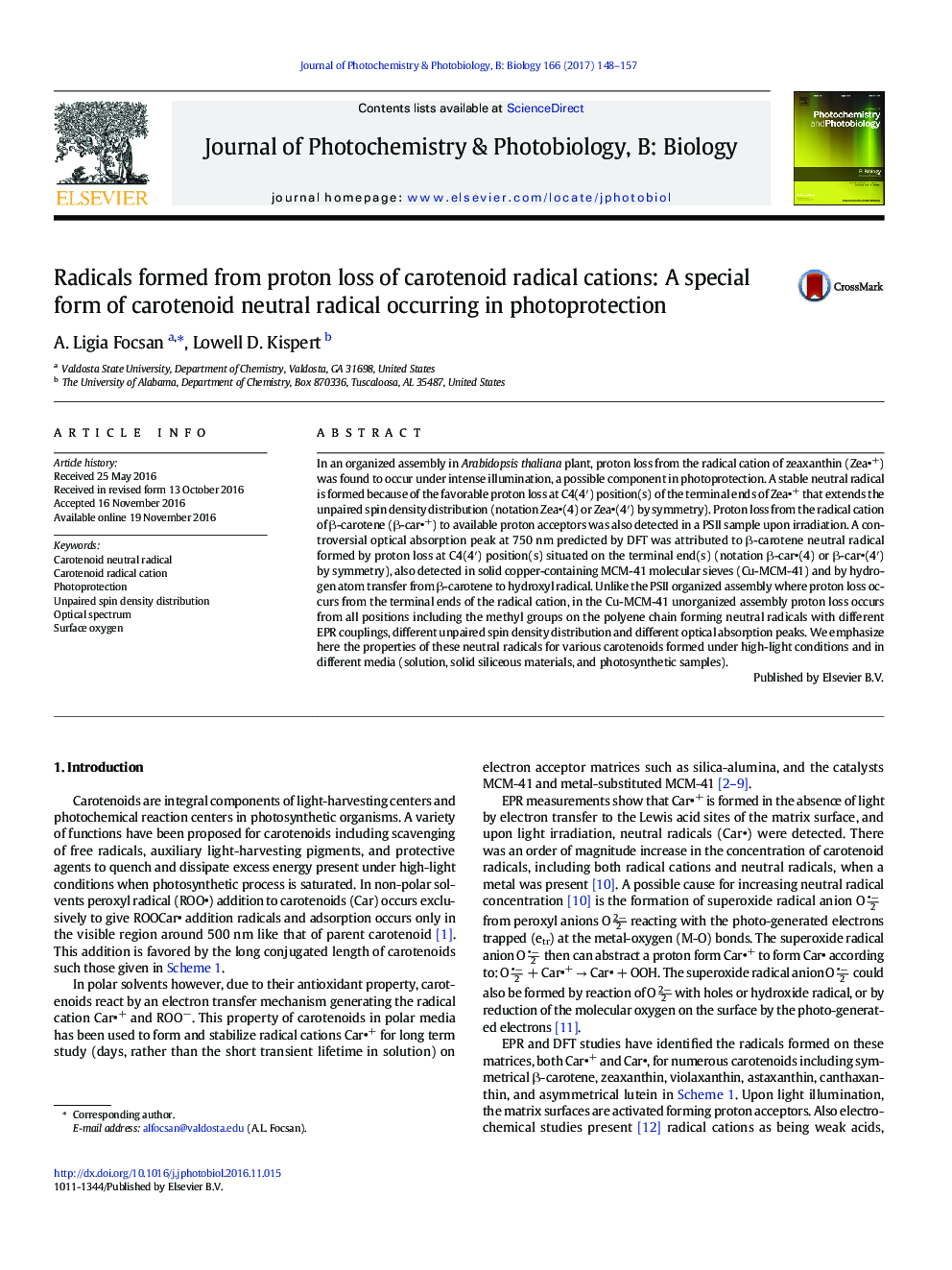| کد مقاله | کد نشریه | سال انتشار | مقاله انگلیسی | نسخه تمام متن |
|---|---|---|---|---|
| 4754568 | 1418067 | 2017 | 10 صفحه PDF | دانلود رایگان |
• Properties of carotenoid neutral radicals Car formed by proton loss from radical cations Car+.
• In organized assemblies proton loss from terminal ends of Car+ to maximize delocalization.
• In unorganized assemblies proton loss occurs from all positions (C4, C5, C9 and C13).
• Different unpaired spin density distributions and optical spectra of Car.
• Car formed under irradiation could provide ps lifetime photoprotective role in plants.
In an organized assembly in Arabidopsis thaliana plant, proton loss from the radical cation of zeaxanthin (Zea+) was found to occur under intense illumination, a possible component in photoprotection. A stable neutral radical is formed because of the favorable proton loss at C4(4′) position(s) of the terminal ends of Zea+ that extends the unpaired spin density distribution (notation Zea(4) or Zea(4′) by symmetry). Proton loss from the radical cation of β-carotene (β-car+) to available proton acceptors was also detected in a PSII sample upon irradiation. A controversial optical absorption peak at 750 nm predicted by DFT was attributed to β-carotene neutral radical formed by proton loss at C4(4′) position(s) situated on the terminal end(s) (notation β-car(4) or β-car(4′) by symmetry), also detected in solid copper-containing MCM-41 molecular sieves (Cu-MCM-41) and by hydrogen atom transfer from β-carotene to hydroxyl radical. Unlike the PSII organized assembly where proton loss occurs from the terminal ends of the radical cation, in the Cu-MCM-41 unorganized assembly proton loss occurs from all positions including the methyl groups on the polyene chain forming neutral radicals with different EPR couplings, different unpaired spin density distribution and different optical absorption peaks. We emphasize here the properties of these neutral radicals for various carotenoids formed under high-light conditions and in different media (solution, solid siliceous materials, and photosynthetic samples).
Graphical AbstractFigure optionsDownload high-quality image (83 K)Download as PowerPoint slide
Journal: Journal of Photochemistry and Photobiology B: Biology - Volume 166, January 2017, Pages 148–157
